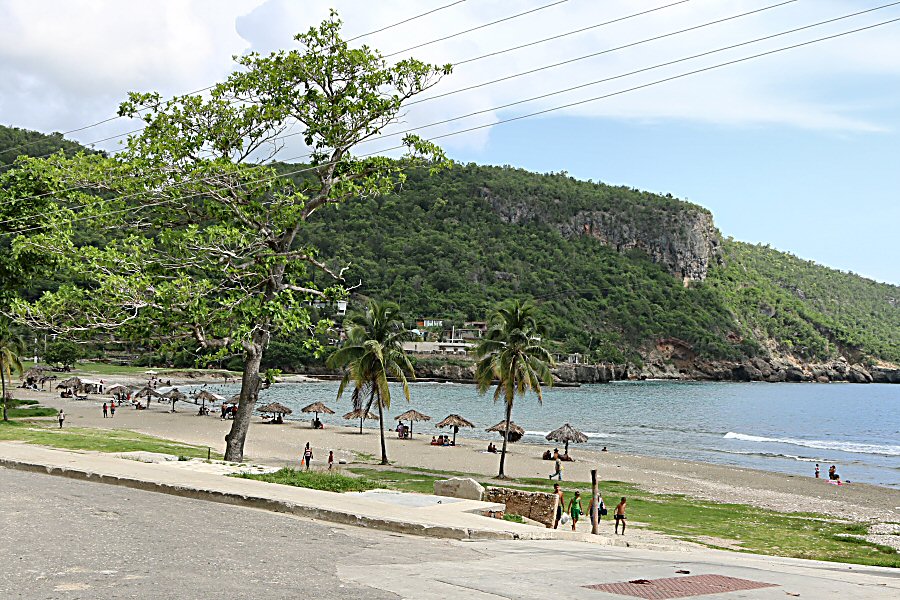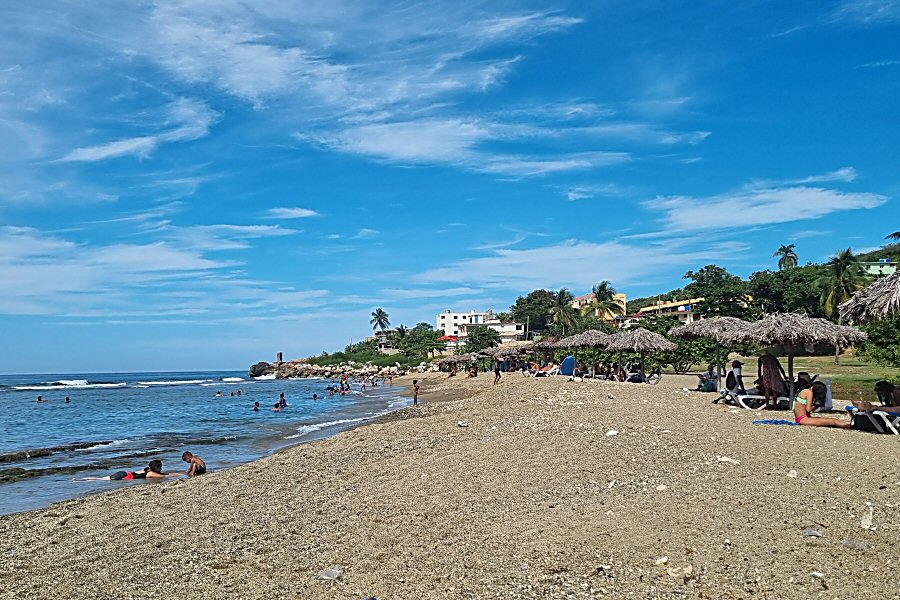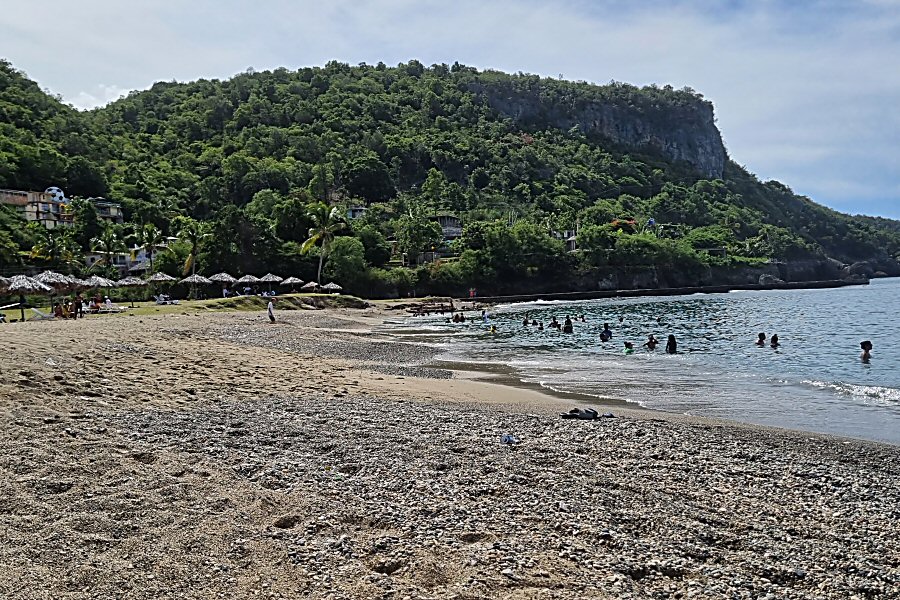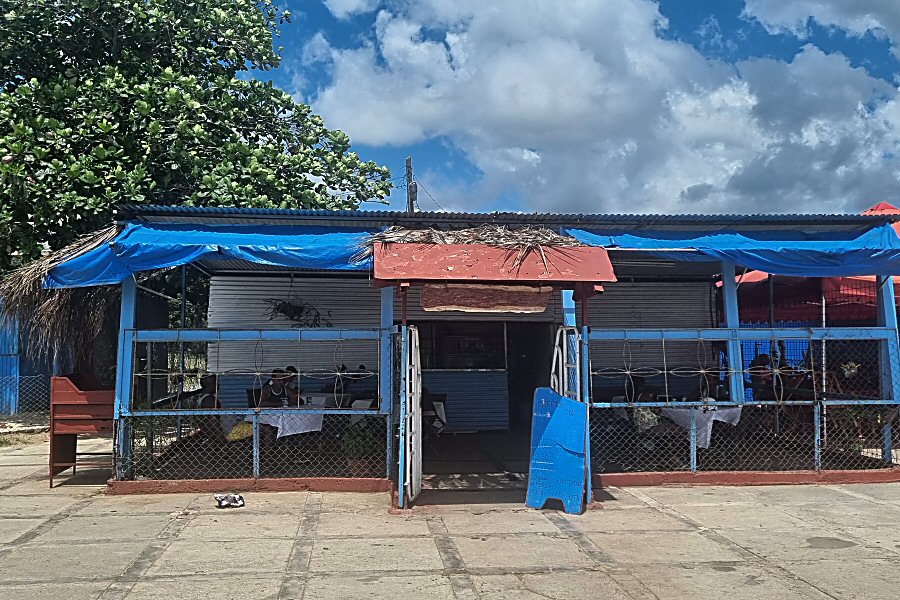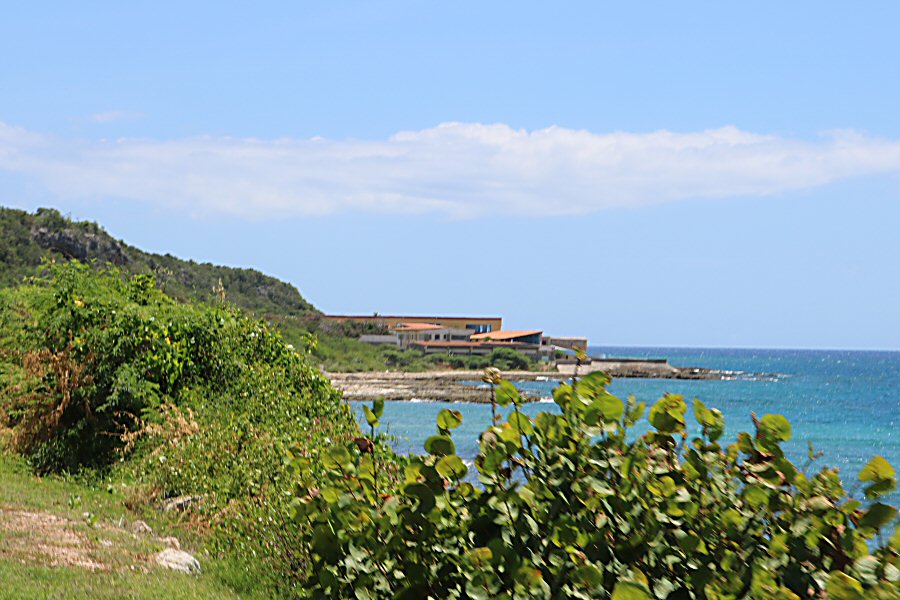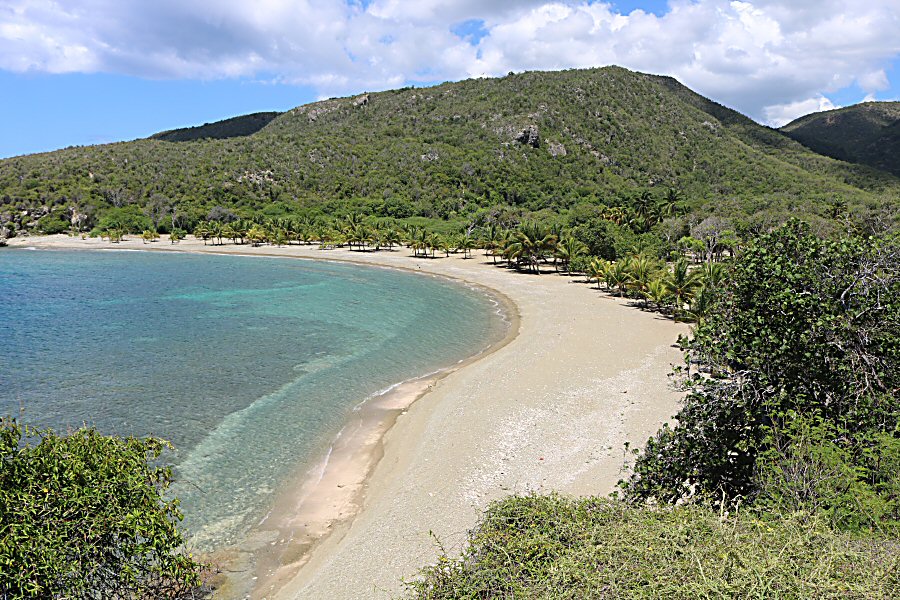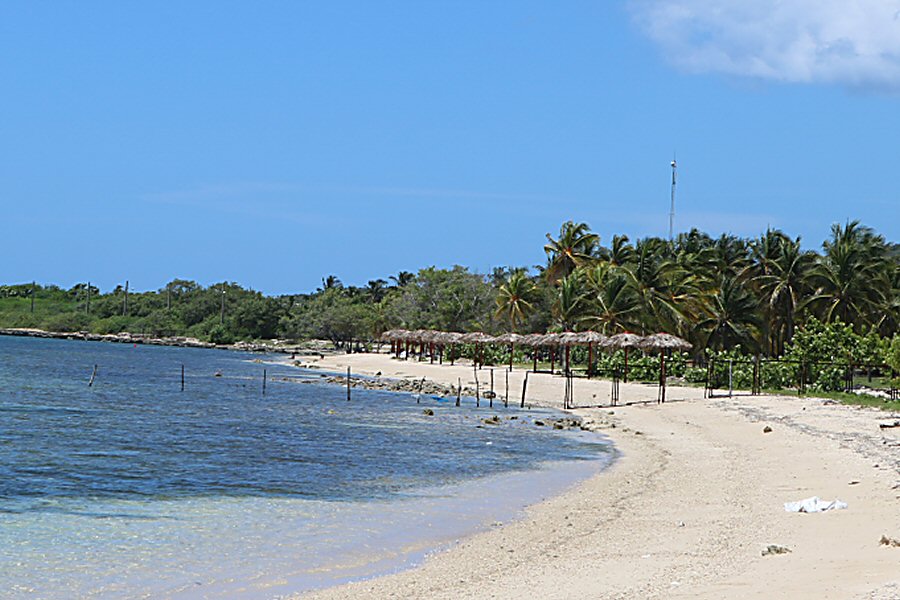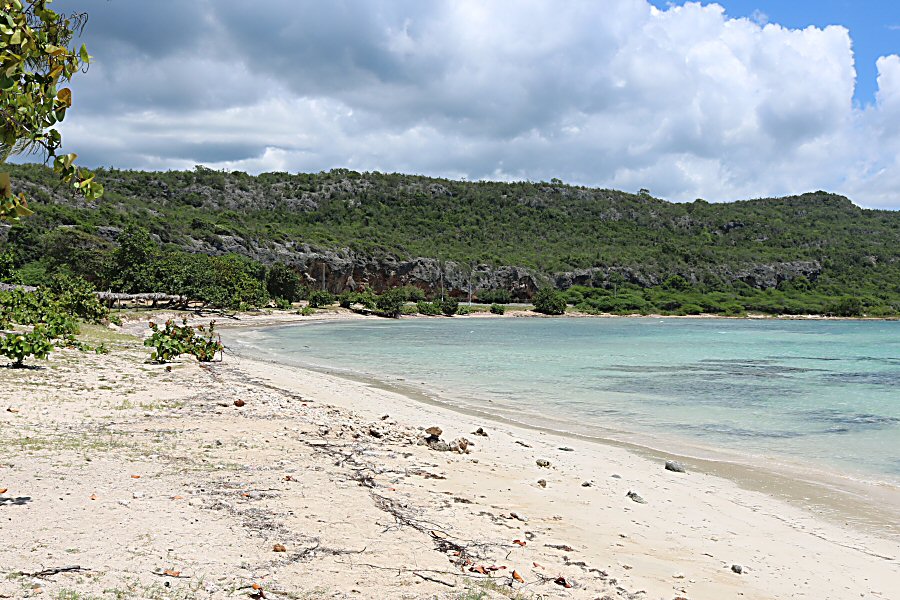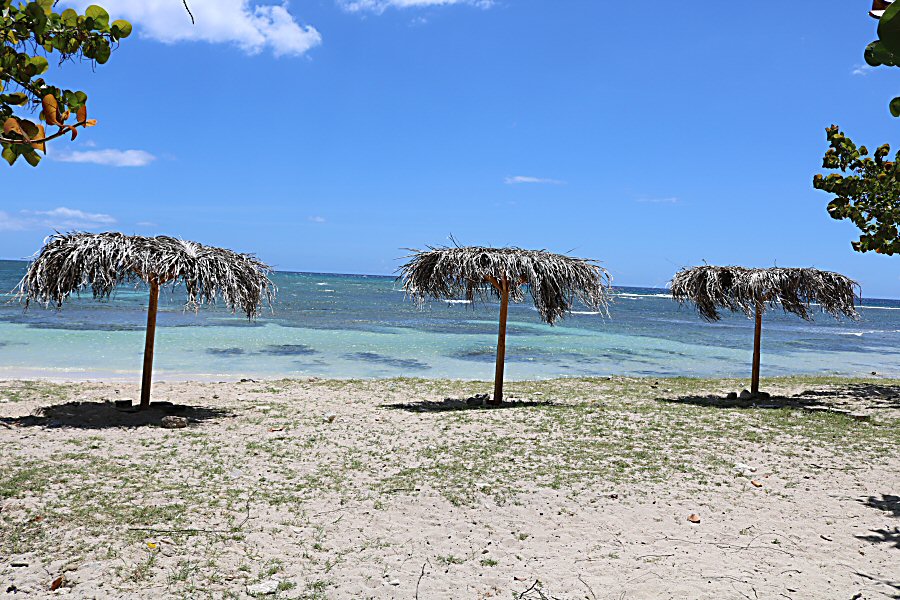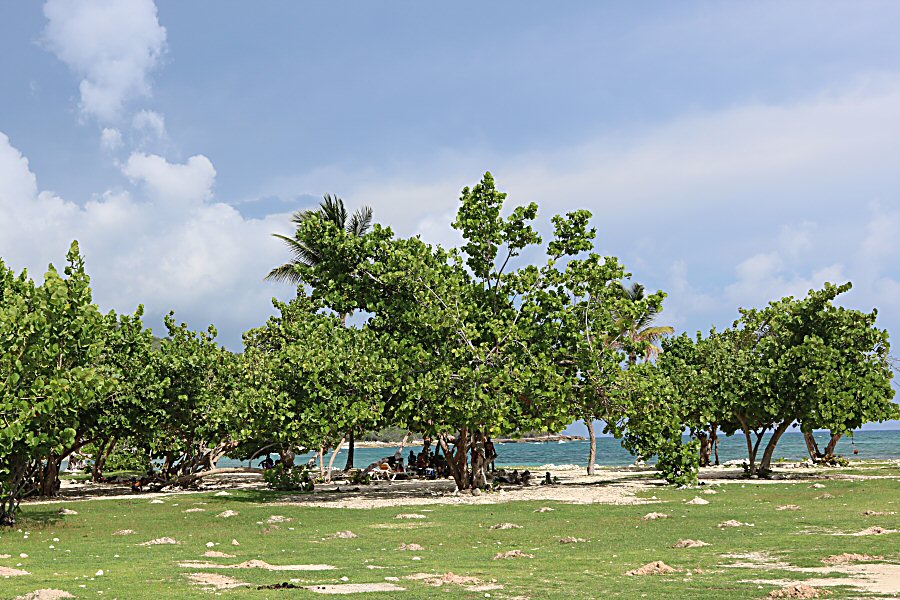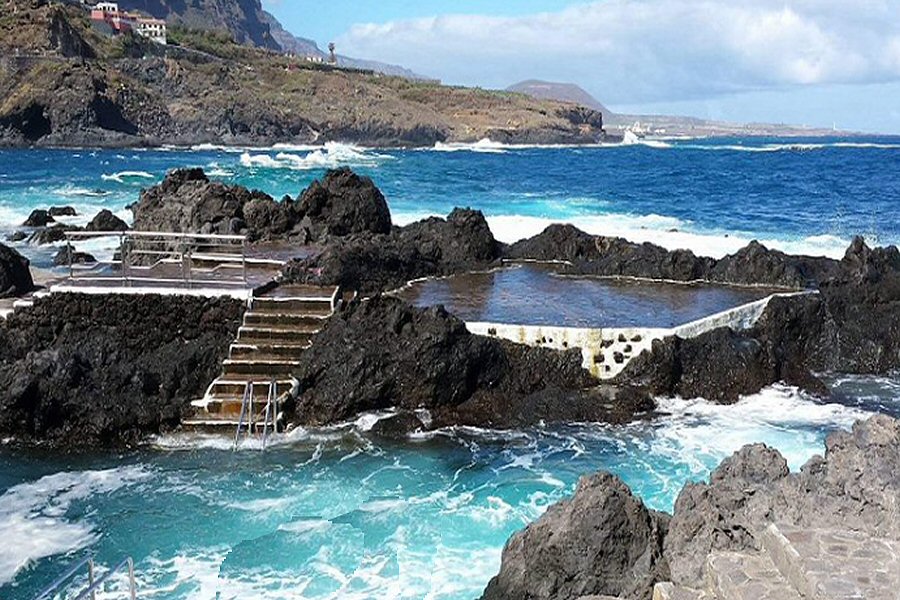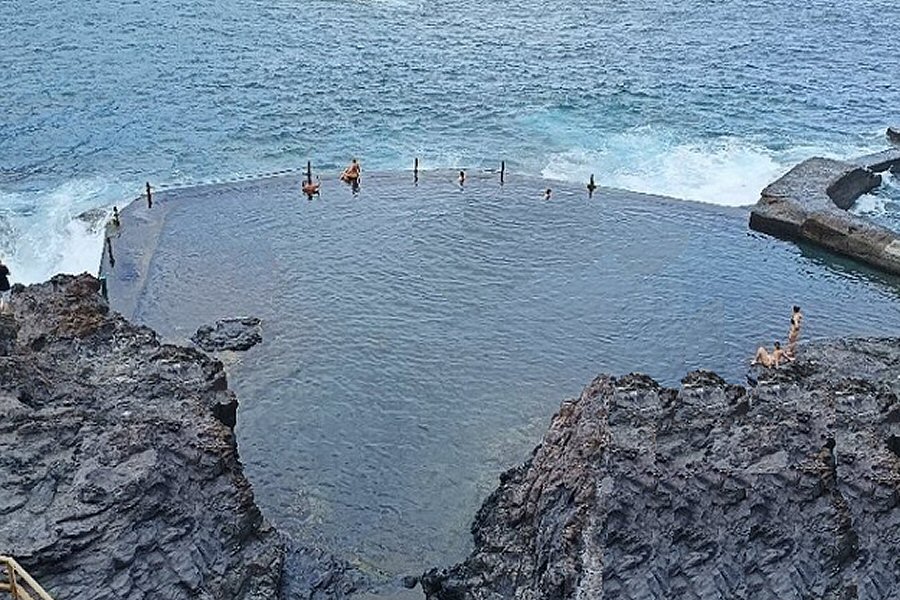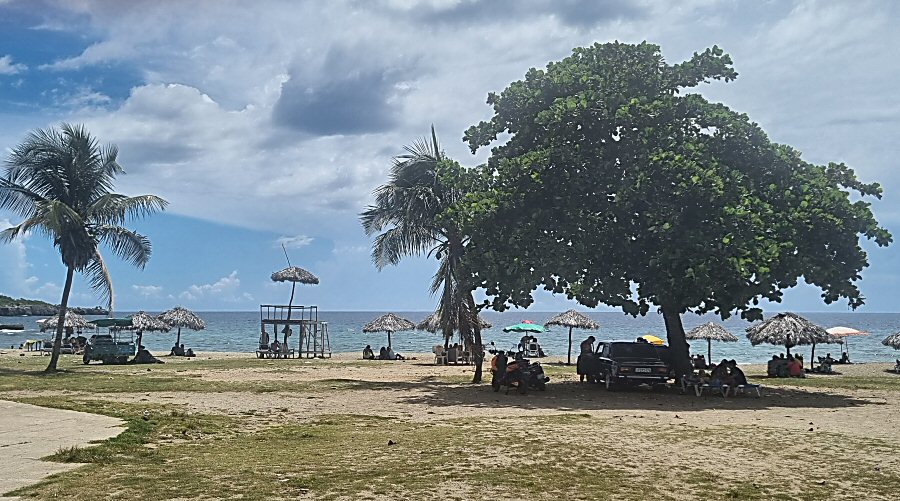

The topography and urbanization around the
Gulf of Santiago de Cuba prevents swimming from here. If you
want to swim in the sea and sunbathe on the beach, you have to
go out of the city. You have two choices: you
will either choose one of the beaches lined up on the Barocao
road to the east, or one of the beaches along the west coast.
Unlike beaches like Playa Del Este, Varadero, Esmeralda beach,
etc., which are natural wonders located in the north of the
island, the beaches around Santiago de Cuba are much more
on modest scale. Again, unlike these beaches on the north that are
famous with their white sand, Santiago beaches are covered
mostly with
coarse sand and gray pebbles. The sea is extremely clean,
less salty, and cool despite the burning sun outside.
EASTERN BEACHES
Playa Siboney
The coastal town Siboney is located
14 km far from the city of Santiago de Cuba (4 km past the La
Gran Piedra turn-off; 17 km far from the Céspedes Park). Its
beach, Playa Siboney, is a popular place among the santiaguero
families that want to benefit the sea, as there is not any other
place for swimming in such proximity of the city of Santiago de
Cuba that would surpass it. On the other hand, although the
water is very clean and transparent, the grey-brown sands, the
pebbled ground, and the limited number of beach parasols,
prevent the beach to be considered as a first-class area from
the point of view of a foreign tourist. The beach is surrounded
by shade-giving coconut and palm trees. There are a few
restaurants adjacent to the beach. You can try grilled octopus
and lobster here.
The word “Siboney” originates from
the Arawak (Arahuaco) language (Arawak is the generic name of a
group of indigenous peoples that had settled in the Antilles
islands and in the Caribbean region when the Spanish arrived in
15th century). Cibo means precious stone (probably implied to
pearl), and ney means people. It is considered that this beach
was inhabited by the Taino and Siboney groups that were
exterminated in 1550s by the arrival of the Spanish. Siboney
beach was also the scene of the Spanish-American War in 1898.
A part of the disembarkation of the USA troops (12 thousand
soldiers) occurred at this coast.
Francisco Repilado, worldwide known
as Compay Segundo, was born in Siboney. Chepín Chovén Orchestra,
founded in 1930s, and the duet “Dúo Los Compadres”, composed by
Lorenzo and Reinaldo Hierrezuelo, are other values of Siboney.
Playa Daiquirí
Daiquirí beach, surrounded by pine
trees, has a cozy view. It is located on the west coast of
Santiago de Cuba very close to the Museo Nacional del Transporte.
Its popularity bases on its role in the Spanish-American War and
on the famous Cuban cocktail that took its name from this beach.
During the Spanish-American War in
1898 the disembarkation of around 6.000 American soldiers in
Daiquirí beach was implemented by the support of the mambisas
forces. On the other hand, Daiquirí has been always the center
of attention due to the unsafe working conditions in the old
iron mine in this area.
In the year 2000 the beach committed
to the responsibility of the Ministry of Interior to use the
area as a holiday camp for the military personal; consequently,
the beach is closed to foreign visitors.
Playa Verraco
18 kilometers
past the Siboney turn-off along the coastal
Baconao road (Carretera de Baconao), you will come across the
Verraco Beach. It is a natural beach surrounded by condense
vegetation; unfortunately, there is not any beach parasol and
sunbed. You have to meet your needs such as food and
drinks from the motel, which is 50 meters away.
Verraco is popular by a small
artists’ community, Comunidad Artística Verraco, that consists
of sculptors, painters, and ceramic artists. They present their
work in a small communal gallery (Galería Aguilar), where their
work is also on sale. In this lovely spacious, quiet gallery you
might even learn for a small fee, how to throw a pot.
Playa Cazonal
Playa Cazonal, located 1 km east of
Acuario Baconao, is one of the most preferred beaches east of
Santiago de Cuba, because it offers many
appealing features, even though it is 47 km far from the center
of the city of Santiago de Cuba. First, it has an unquestionable
nice natural beauty. The sand is lighter in color. Second, it is
backed by a huge hotel complex, Club Amigo Carisol Los
Corales (Tel +53 22356113). You can get
all your needs here. A day-pass costs about 25 $. Third, the
nearby coral reef offers an ideal place for snorkeling and
diving.
Playa Caletoncito
Caletoncito Beach lies between the
Caribbean Sea and the Baconao Lagoon. It is a preferred beach
for people that escape from the inquisitive looks, particularly
for young people. It is also a place where the visitors of the
Baconao Lagoon may rest on their return to Santiago de Cuba and
relax. It has an untouched beauty with clean, transparent water,
blue sky, and surrounding mountains. It has a length of about
1,5 km. There is no need for any sun parasol, because even
though any sun parasol would be present, you would prefer the
shade of the big trees around. Don’t forget that there is no
facility around to meet your eating and drinking needs.
The river Baconao meets the sea at
the end of the beach. The paved road along the river continues
3.5 km up to beautiful Valle de Rio Baconao. Playa
Caletoncito marks the end of the coastal road for the
foreigners. A checkpoint after the beach prevents the cars
travelling further due to the US naval base 25 km ahead as the
crow flies.
Playa de Mar Verde
An insignificant beach with brick-coloured sand.
Playa de Caletón Blanco
After traveling approximately 25 km
from the city border with a beautiful sea view at the foot of
the mountains, you will arrive at Playa de Caletón Blanco. The
road, which was previously famous for its potholes, has been
repaired. It is a pleasant resting place with natural ponds
formed by lava rocks on the seaside, where strong waves with
white foam crash onto the beach. It is especially appreciated by
young people who jump off the rocks. Eating and drinking
facilities (bar and restaurant) are quite sufficient, and of
course, grilled octopus and lobster are preferred. Although some
people say that there is a fee to enter the beach, this is not
true.
